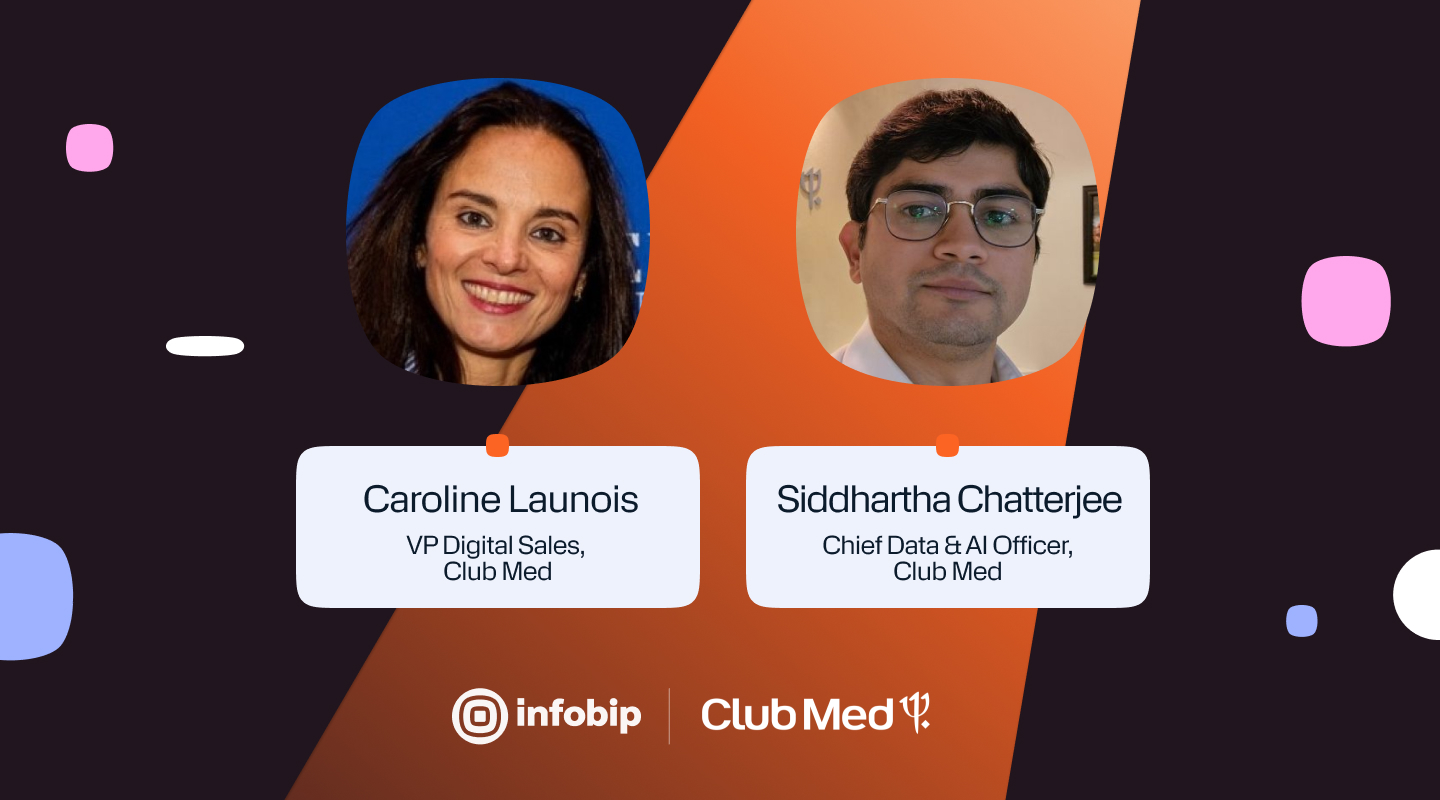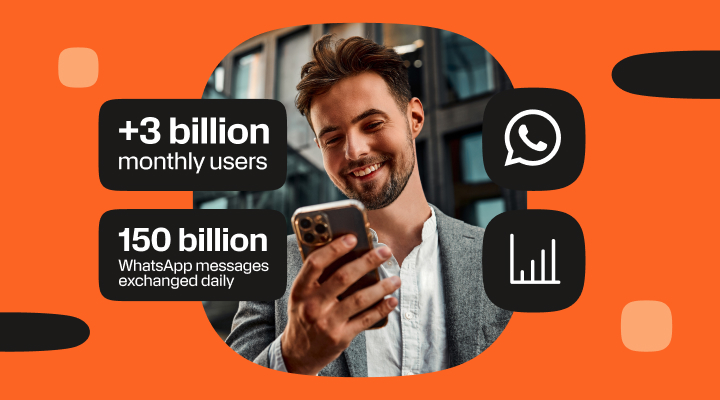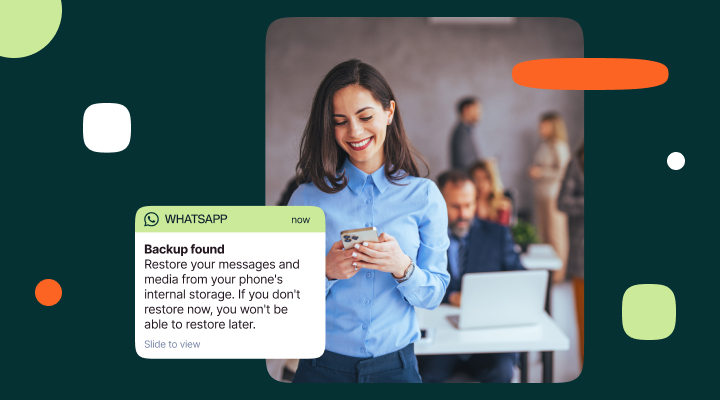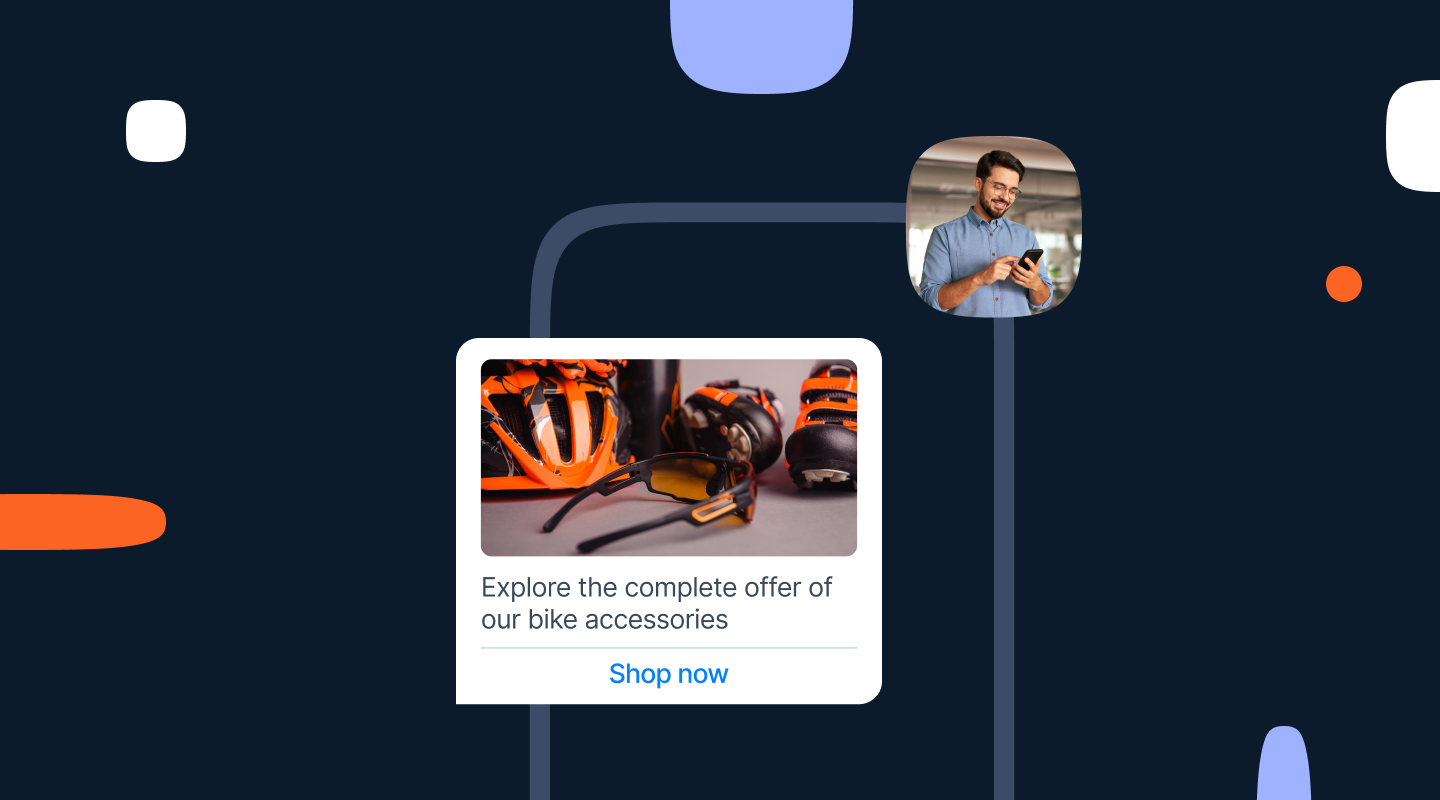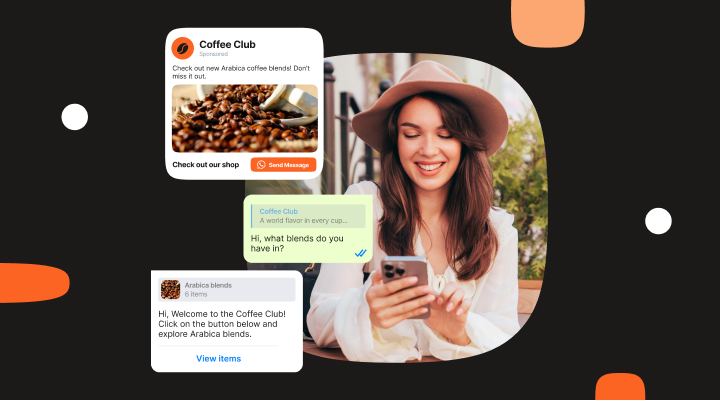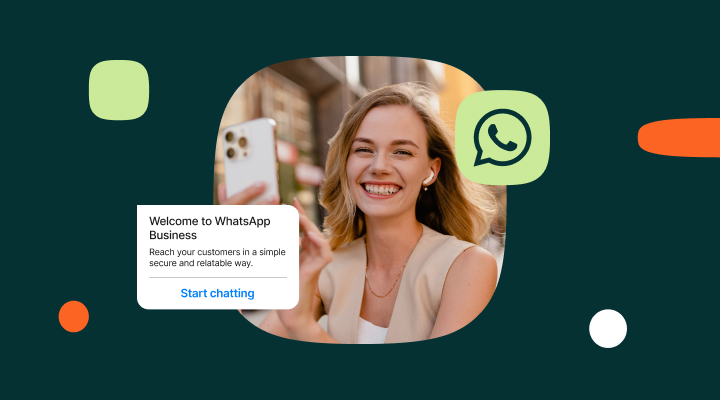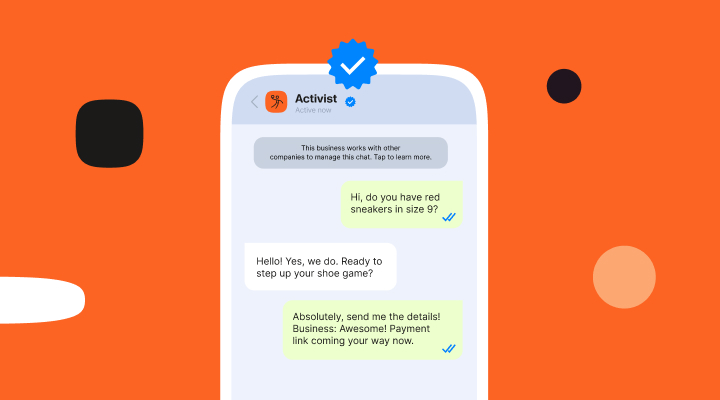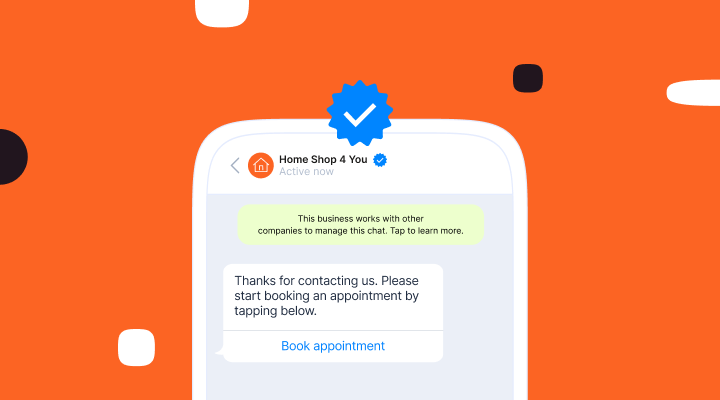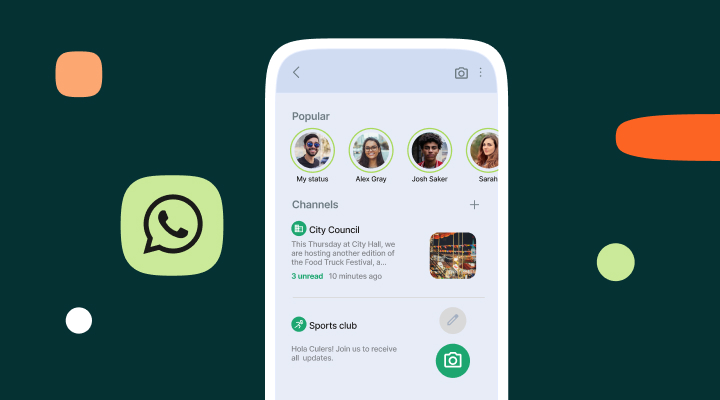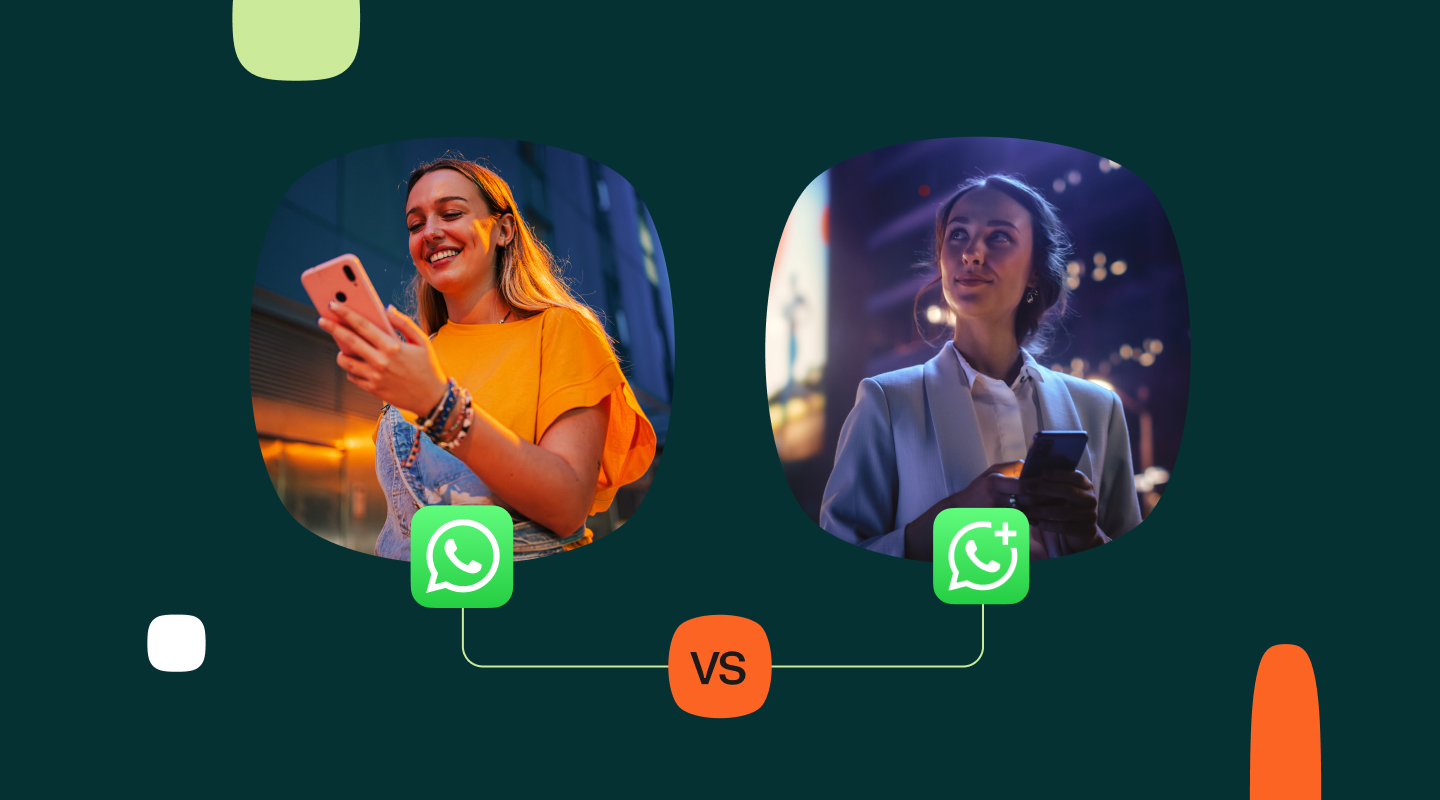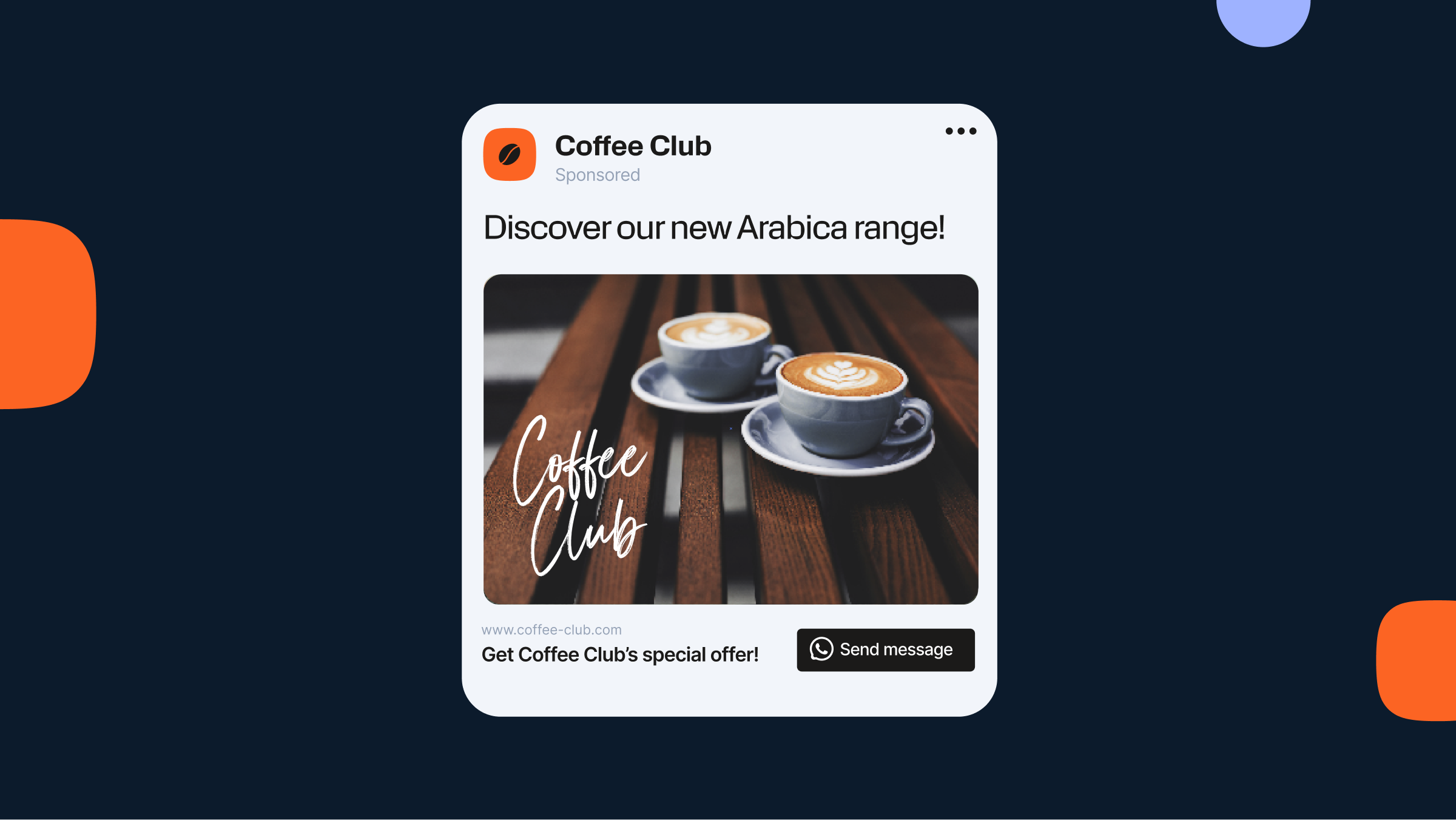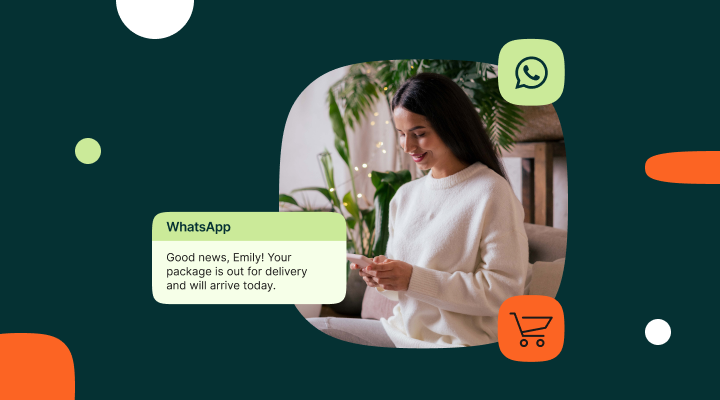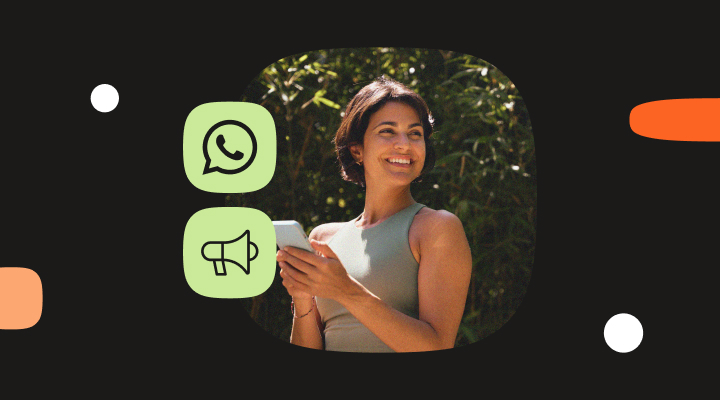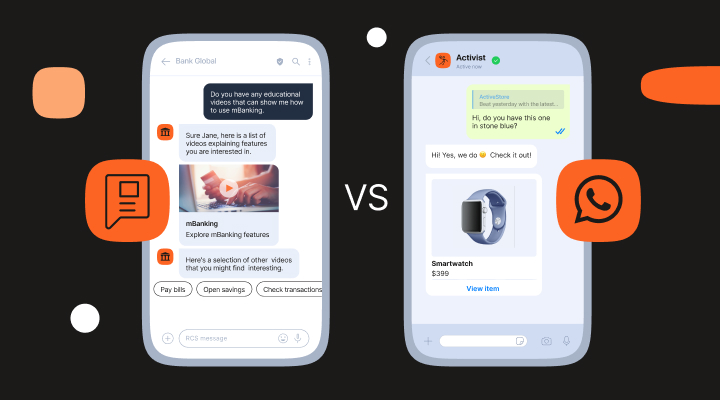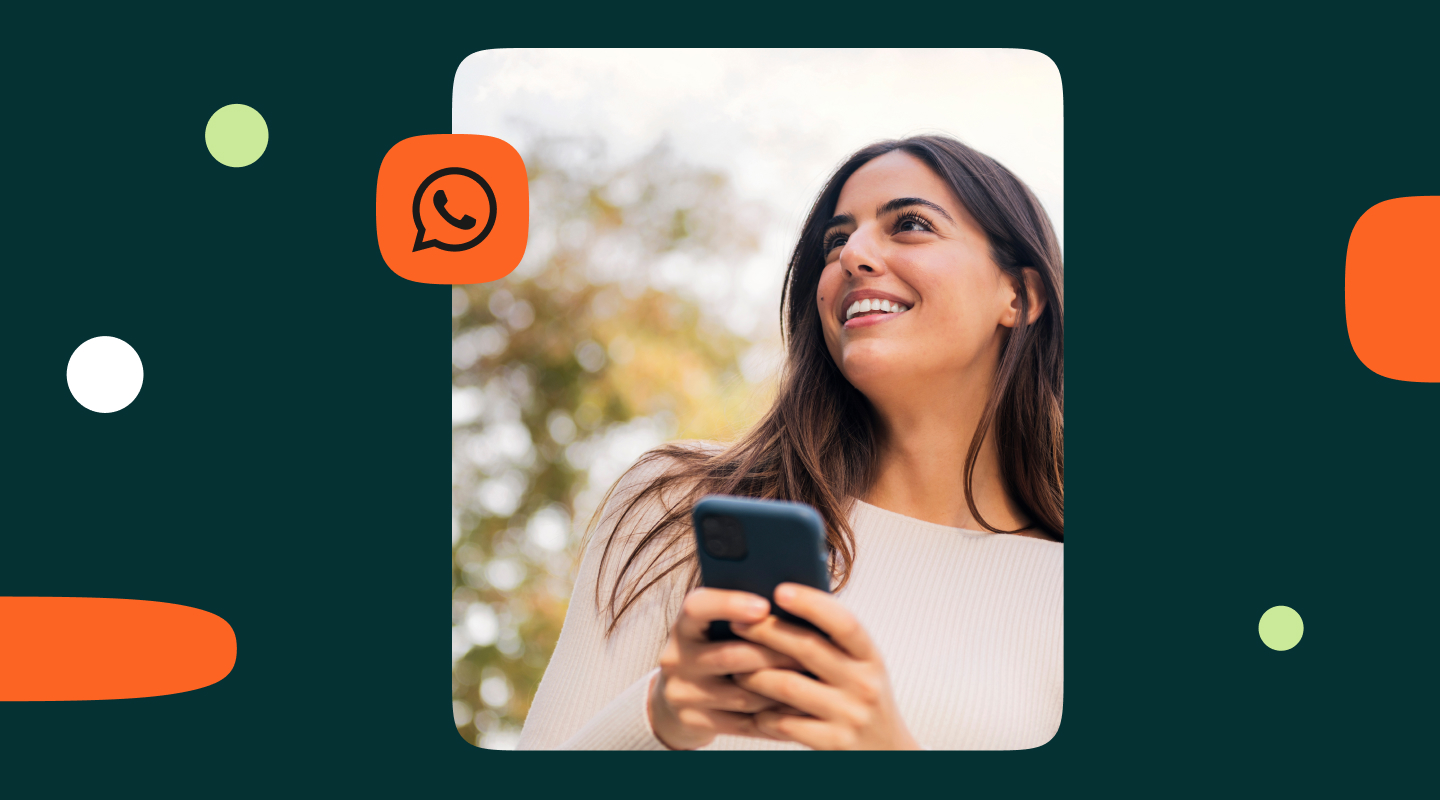WhatsApp marketing: Campaigns, solutions, and strategy (2025 guide)
Learn how to build a winning WhatsApp marketing strategy. Discover campaigns, solutions, and software to boost engagement and ROI.

WhatsApp marketing has become one of the most effective ways for brands to connect with customers through personalized, real-time conversations. This guide covers the essentials: campaigns, solutions, and software, so you can build a strategy that drives real results.
What is WhatsApp marketing?
WhatsApp marketing uses WhatsApp Business Platform to run permission-based, business-initiated conversations that customers have opted into. These can include promotions and offers, as well as utility updates and journeys that move a customer from discovery to purchase and beyond.
WhatsApp marketing campaigns are one of the most effective conversational marketing strategies for driving incremental sales and achieving better ROI. And WhatsApp marketing conversations are one of three WhatsApp categories alongside utility and authentication.
With WhatsApp’s rich message types including media, buttons, carousels, and CTAs, proactive marketing messages can be used for highly personalized communication about new products or services, cart abandonment notifications, specialized offers, and many more use cases. Brands should keep in mind that WhatsApp is a conversational platform used by customers to chat with friends and family, so having a strong (and non-spammy) strategy is key. Otherwise, you run the risk of building a poor reputation and losing opt-ins.
30%
YoY growth in brands running conversational marketing on our platform
175M
people message a business on WhatsApp daily
70%
of businesses report higher customer satisfaction on WhatsApp
Why use WhatsApp for marketing? (8 benefits)
- Global reach: Three billion users access the WhatsApp app on a monthly basis in over 180 countries and WhatsApp supports 70 languages. The app’s reach in usage penetration is particularly strong, and it is one of the most popular mobile social apps worldwide.
- High engagement: Globally, the average user spent 17 hours a month on the app in 2025, meaning your marketing messages get the best visibility.
- Security and trust: As WhatsApp has strict rules requiring brands to obtain opt-ins from customers, consumers are far more likely to open and engage with messages as they trust that they are legitimate and relevant. WhatsApp also encrypts messages, and there are no ads to distract users from your own marketing messages.
- High open rate, low bounce rate: WhatsApp messages boast a massive 98% open rate, significantly higher than some other channels.
- Easy integrations by API: WhatsApp offers a programmable API, which means that it can be easily integrated into any existing marketing stack to enable WhatsApp messaging at scale.
- Full-funnel interactions: With WhatsApp, you can use a single channel to interact with customers all the way from the discovery phase through to purchase and beyond to keep customers engaged and loyal.
- Ideal for business users: WhatsApp Business Platform provides organizations of all sizes with features and capabilities designed specifically for business use cases, with brand messages being delivered to the same inbox as users’ personal communication.
- It enables conversational marketing: Thanks to the rich messaging features on WhatsApp and end-to-end journey interactions, WhatsApp is one of the best channels to keep your marketing interactions conversational and personal.
WhatsApp marketing solutions and tools
WhatsApp offers several ways for businesses to connect with customers, each suited to different levels of scale and complexity. Let’s break down the difference between the WhatsApp Business App, the WhatsApp Business Platform, and the WhatsApp Business Platform through Infobip to see which option best fits your marketing goals.
WhatsApp Business App
WhatsApp Business App suits small teams and early-stage use. It supports manual messaging, basic labels, quick replies, and simple catalogs, helping you start conversations quickly and manage them easily. It’s best suited for one-to-one conversations and small campaigns. However, if you need automation, segmentation, or deeper analytics, you will quickly outgrow it.
WhatsApp Business Platform
WhatsApp Business Platform is built for scale. It lets you run campaigns, automate journeys, hand off to agents, and track results in one place.
You can use rich messaging like carousels, product lists, images, videos, buttons, location sharing, Flows, and in-chat payments to deliver app-like experiences inside. A verified business profile and end-to-end encryption help build trust and protect privacy, while opt-ins and approved templates keep business-initiated messages compliant. You can bring customers in through click to WhatsApp ads, QR codes, and wa.me links, and once the user starts interacting with you via click to WhatsApp ads, a special entry point rules apply, meaning all templated messages sent within 72-hour time window are free of charge.
For broader coverage, orchestrate WhatsApp with SMS, RCS, Telegram, Viber for Business, and more for unified journeys and failover. Real-time analytics show delivery, read, click, and conversion metrics, and Infobip can send conversion signals to Meta and provide a unified ads dashboard.
WhatsApp Business Platform through Infobip
Infobip offers an all-in-one WhatsApp marketing solution that brings automation, analytics, and personalization together.
With WhatsApp Flows and chatbots, you can design guided journeys, from booking and ordering to feedback and support, while managing compliant templates and payments in one place. Integrations with CRM, CDP, and eCommerce tools make scaling campaigns simple.
Here’s a quick comparison to help you determine which would work best for your business:
| WhatsApp Business App | WhatsApp Business Platform | |
|---|---|---|
| Audience | Small/medium size businesses and entrepreneurs | Medium/large size businesses or SMBs looking to scale |
| Platform | App or browser | Solution provider like Infobip |
| Number of users | Up to 4 agents | Unlimited |
| Features |
– Business profile – Product catalog – Broadcast messages (limited to one message) – Automated messages (limited) – Group chats (can both create and participate in) – Voice/video calls – Blue tick verification is not supported – No buttons |
– Unlimited Business profile – Product catalogue – Broadcast messages – Automated messages (unlimited, including chatbots) – Session messages – Group chats (create but not participate in) – Official Business Account (green tick) available – Various types of CTA buttons |
| Integrations | Not supported | Supports integrations |
For a deeper breakdown, read our guide on the differences between the WhatsApp Business App vs WhatsApp Business Platform.
Key WhatsApp marketing features to use
So, what features and capabilities should your business use for WhatsApp marketing? Let’s break down the most important ones and how to use them to your advantage.
Click to WhatsApp ads
Your first step to chatting with customers is collecting opt-ins. Without them you can’t start a conversation or send any promotional messages. There are multiple ways to collect WhatsApp opt-ins, but Click to chat ads are among the more popular and effective methods.
As part of your strategy, launch targeted and relevant ads on Instagram or Facebook, with a “send message on WhatsApp” button that gives customers easy access to start the conversation.
Once the ad is launched on Facebook Ad Manager and connected to WhatsApp, your business can access specific data on how many conversations were initiated and behavioral data such as conversion tracking on websites or mobile apps, post-purchase experiences, abandoned cart recovery, and the end-to-end marketing funnel from the number of impressions in the Facebook feed to the number of conversions and ROAS for each campaign.
It can be used for any stage of the journey, from initial discovery of your brand, to targeted re-engagement, making conversational marketing a breeze.
Lead generation
Convert interest into conversation by letting customers reach out directly from your social media ads. Engage them instantly in chat to answer questions and drive faster conversions.
Ideal message type: WhatsApp Flows
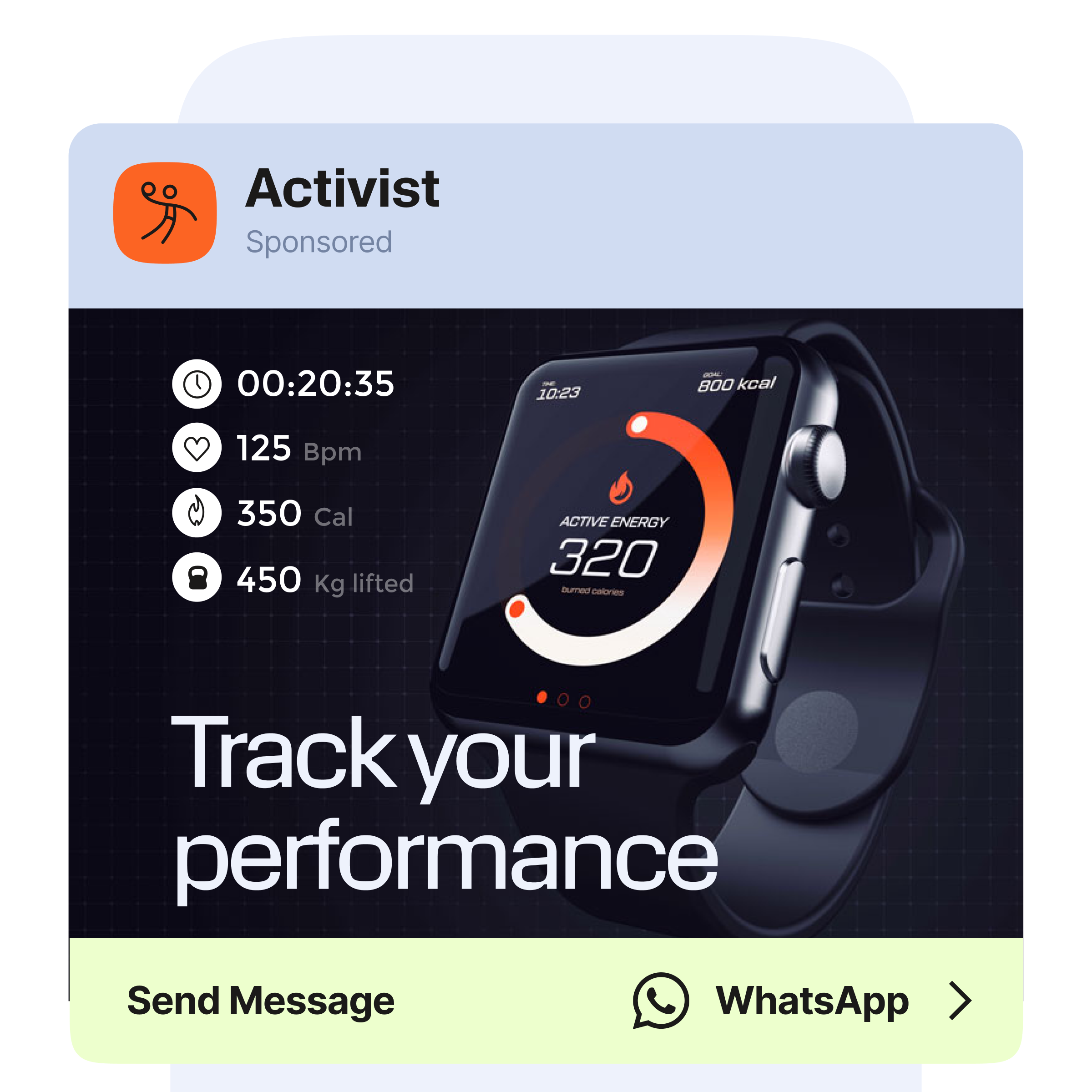
WhatsApp Flows
A major benefit of using a conversational channel like WhatsApp is keeping the user experience seamless, easy, and, of course, within the channel.
WhatsApp Flows is designed to help improve customer experience over WhatsApp by simplifying use cases that would otherwise require switching to a third-party website or app. It enables businesses to build and offer an end-to-end journey all within WhatsApp.
Appointment booking
Streamline your processes and reduce the workload of your staff by providing self-service appointment scheduling options for customers via WhatsApp.
Ideal message type: WhatsApp Flows
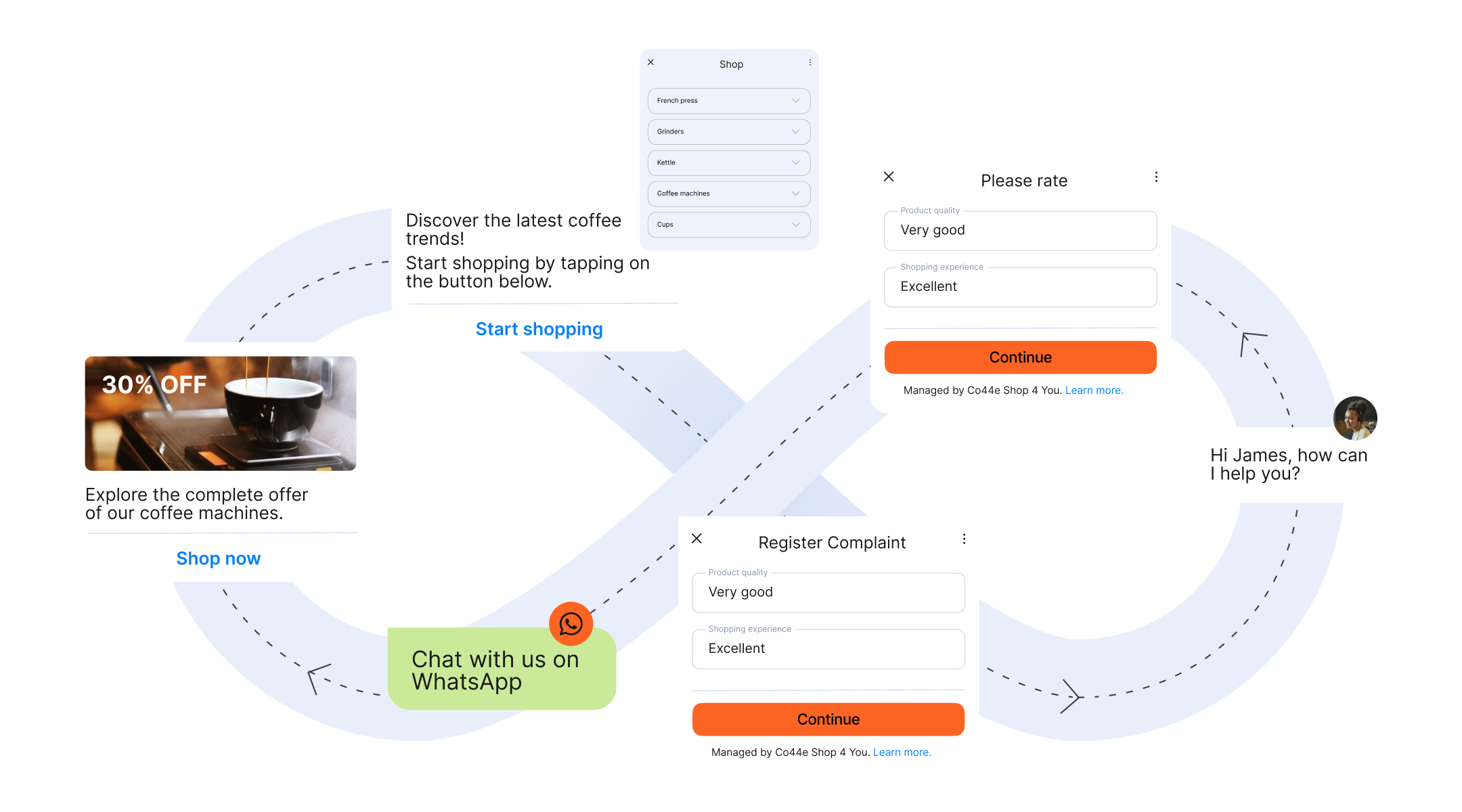
WhatsApp chatbots (marketing use cases)
A chatbot is great for conversational support, but did you know it is just as useful for marketing messages?
It’s an ideal way to carry out your marketing campaigns and continue the conversation with customers. Your chatbot should reflect your brand persona through its messaging style and image. Connecting your chatbot to a customer data platform will allow you to collect valuable first party data which you can use to better target existing customers in the future.
Luckily, building a WhatsApp chatbot isn’t as hard as you might think. There are free templates available that can help you quickly launch a reliable chatbot in a matter of minutes.
Building a chatbot on WhatsApp using Infobip’s chatbot building platform Answers has helped us introduce self-service options to customers. As a result, we’ve seen a reduction in the volume of queries coming to our customer care center and a 40% increase in click-through rates rising from 20% to 60%. The onboarding assistance and servicing we received from Infobip have made sure that the integrations were easily made.
Navratan Bohra, Deputy Vice President of Operations & IT
Anand Rathi Share and Stock Brokers Ltd.
Automated customer engagement
Use WhatsApp chatbots to handle repetitive queries, share personalized offers, and guide customers through the buying journey. Combine automation with live agent handover for a smooth conversational experience.
Ideal message type: WhatsApp chatbots
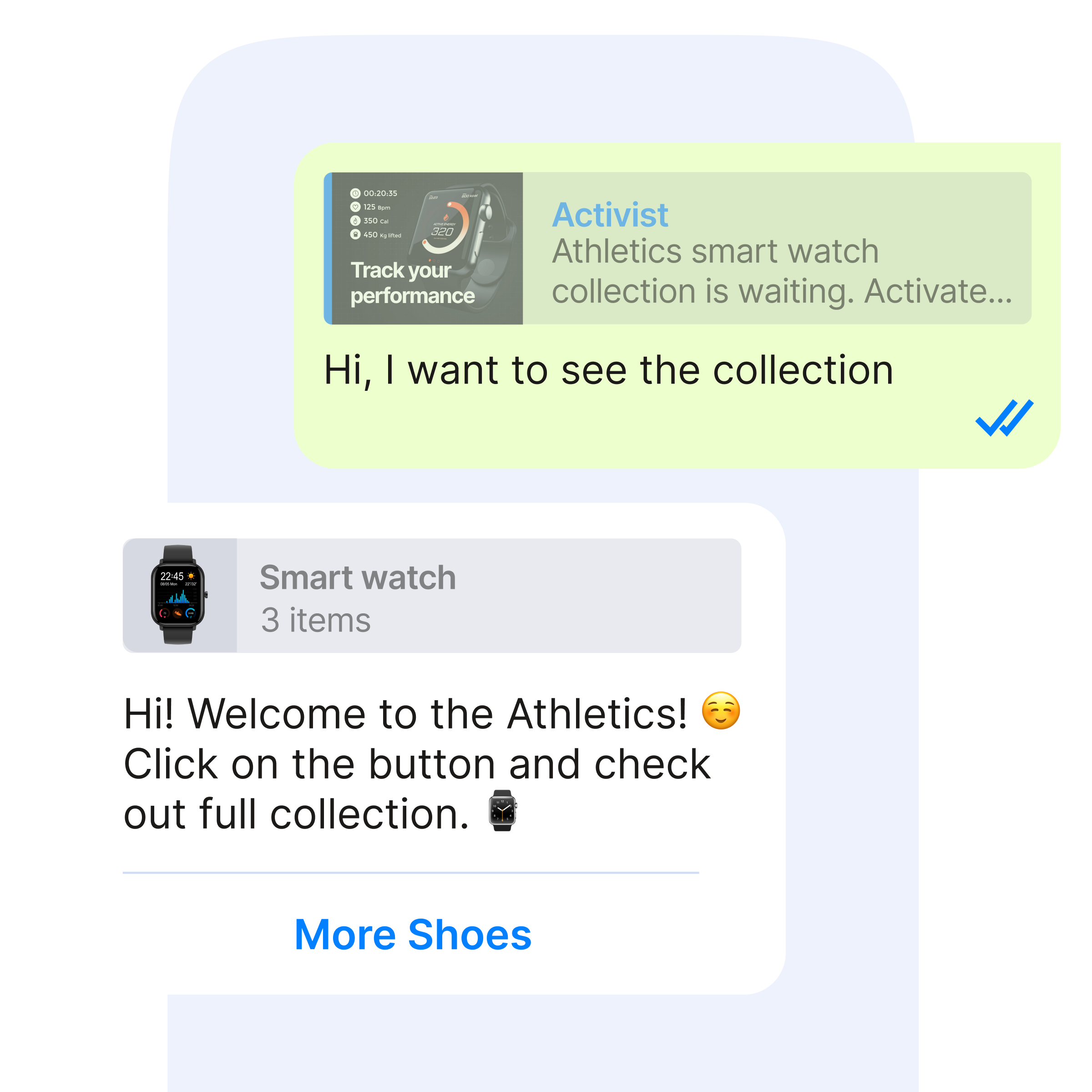
Product catalogs
This feature enables you to add up to 30 products with photos and detailed descriptions that customers can browse from within the WhatsApp chat. This feature is also available to integrate via API. When a person wants to purchase an item, they can either make a payment within WhatsApp, or click through to your website’s checkout page complete the transaction. This allows customers to transition from each stage of the journey seamlessly by remaining within the WhatsApp conversation.
Upsell and cross-sell
Send customers related product recommendations based on purchases or items that they have shown an interest in or placed in their shopping cart.
Ideal message type: Product catalogs
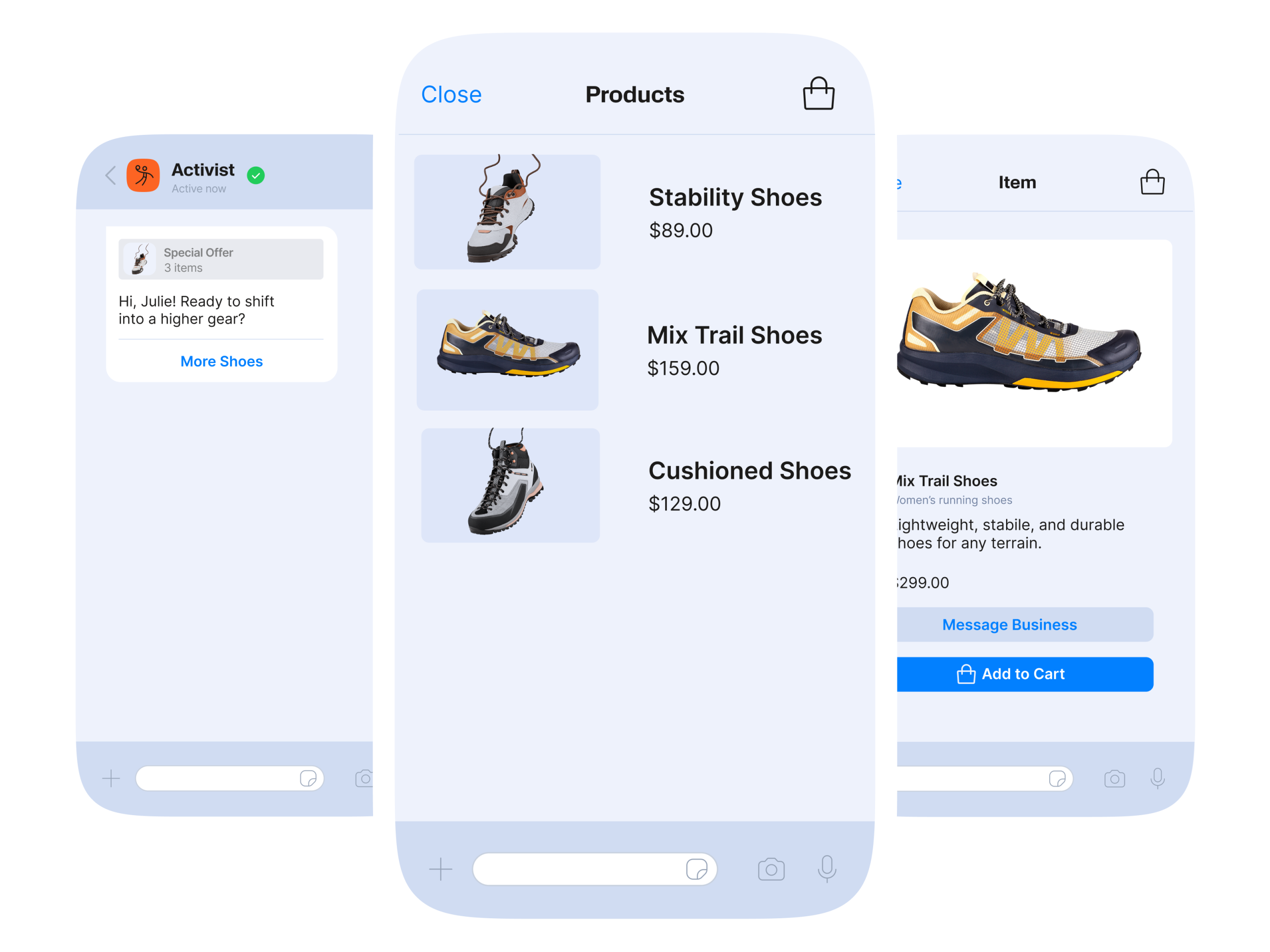
Carousels
Get the most out of one message with carousels. Carousels allow you to include up to 10 cards to promote products, discounted offers, items left in carts, highlighting travel destinations, and anything else your brand wants to advertise. Carousels are easy to use with their scrolling feature and make shopping and exploring your offers more engaging to your customers. You can add any call-to-action to your carousel, from click to call buttons, URLs, or quick replies.
Event triggered notifications
Use event or behavior triggered messaging to reach your customers at the right time. If a customer’s favorite item is out of stock, send them offers for similar products over WhatsApp to encourage a sale.
Ideal message type: Carousels
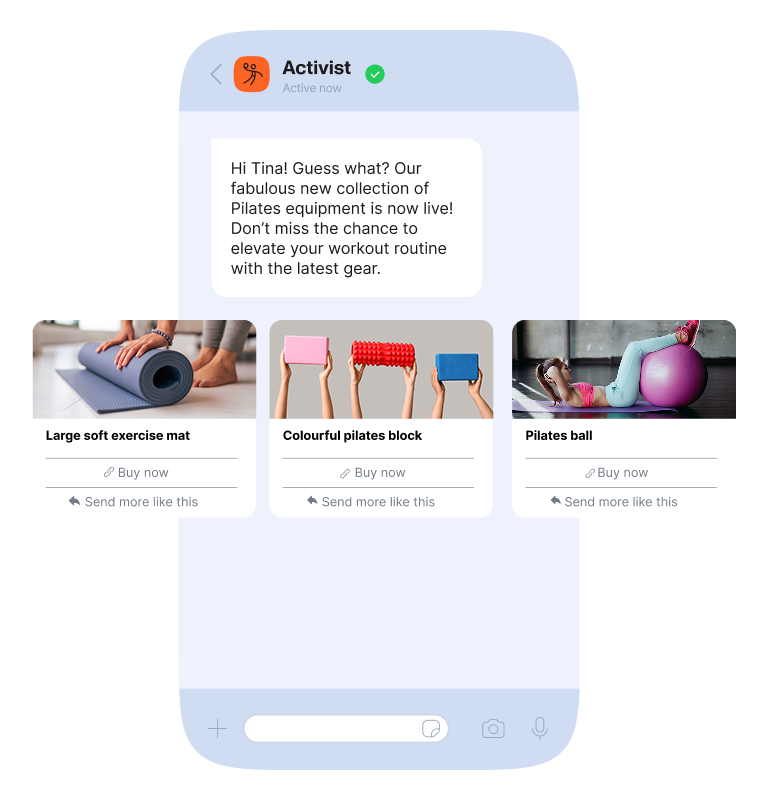
Limited-time offers
Time sensitive offers are sometimes difficult to promote as customers skim messages, and don’t always realize the offer expires soon. With Limited Time Offer messages on WhatsApp, you can display expiration dates and countdowns making it obvious and easy to understand that the offer has a time limit, helping you improve conversion rates. When the timer expires, so does the coupon, the code becomes inactive, and customers can no longer use it.
Timed messages
Use WhatsApp to send promotional messages at the best time or date to convert. For example, when a sale starts, or prior to the expiry date of a contract.
Ideal message type: Limited time offers message types
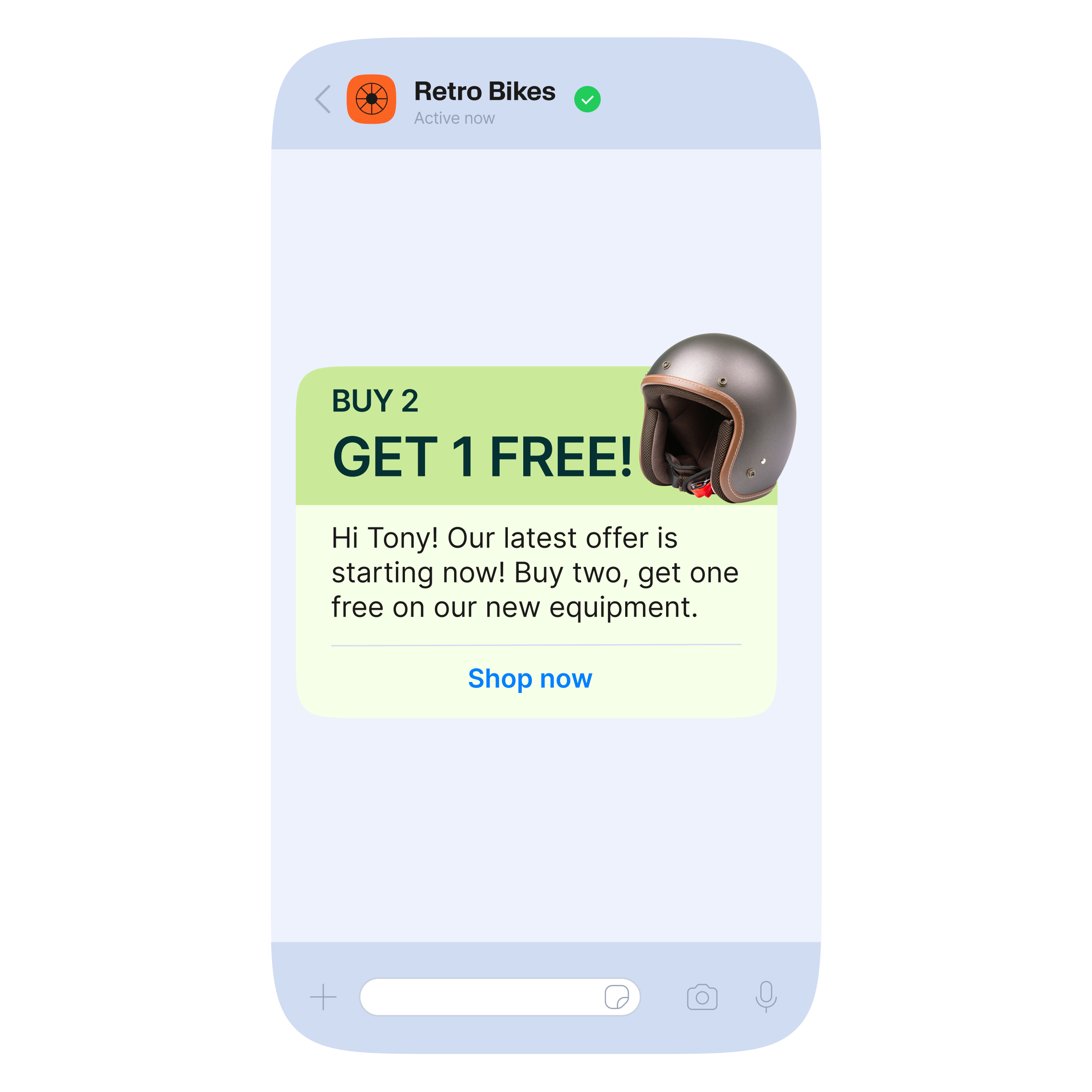
Marketing Messages API for WhatsApp (formerly known as Marketing Messages Lite API)
Take WhatsApp marketing to the next level with Marketing Messages API for WhatsApp.
This new messaging API can help optimize every campaign by applying quality checks for smarter targeting, so your messages land with the right audience, at the right time.
Marketing Messages API for WhatsApp helps increase delivery and read rates while limiting spammy experiences for your customers. With Marketing Messages API for WhatsApp, you’ll enjoy higher ROI and unlock new messaging formats and exclusive capabilities, making it easier to scale up your WhatsApp campaigns.
Marketing campaigns
Maximize engagement with campaigns that automatically adjust timing, frequency, and targeting to reach the right audience every time.
Ideal message type: Marketing Messages API for WhatsApp
WhatsApp payments
If your conversational marketing flows have been successful, and your customer has reached the end of the funnel, don’t redirect them to a new channel, keep everything within WhatsApp by enabling payments on WhatsApp. For the time being, this feature is only available in India and Brazil.
In-chat checkout
Reduce drop-offs by allowing customers to complete their purchase within the same conversation. Keep the journey simple, secure, and conversion-focused.
Ideal message type: WhatsApp payments
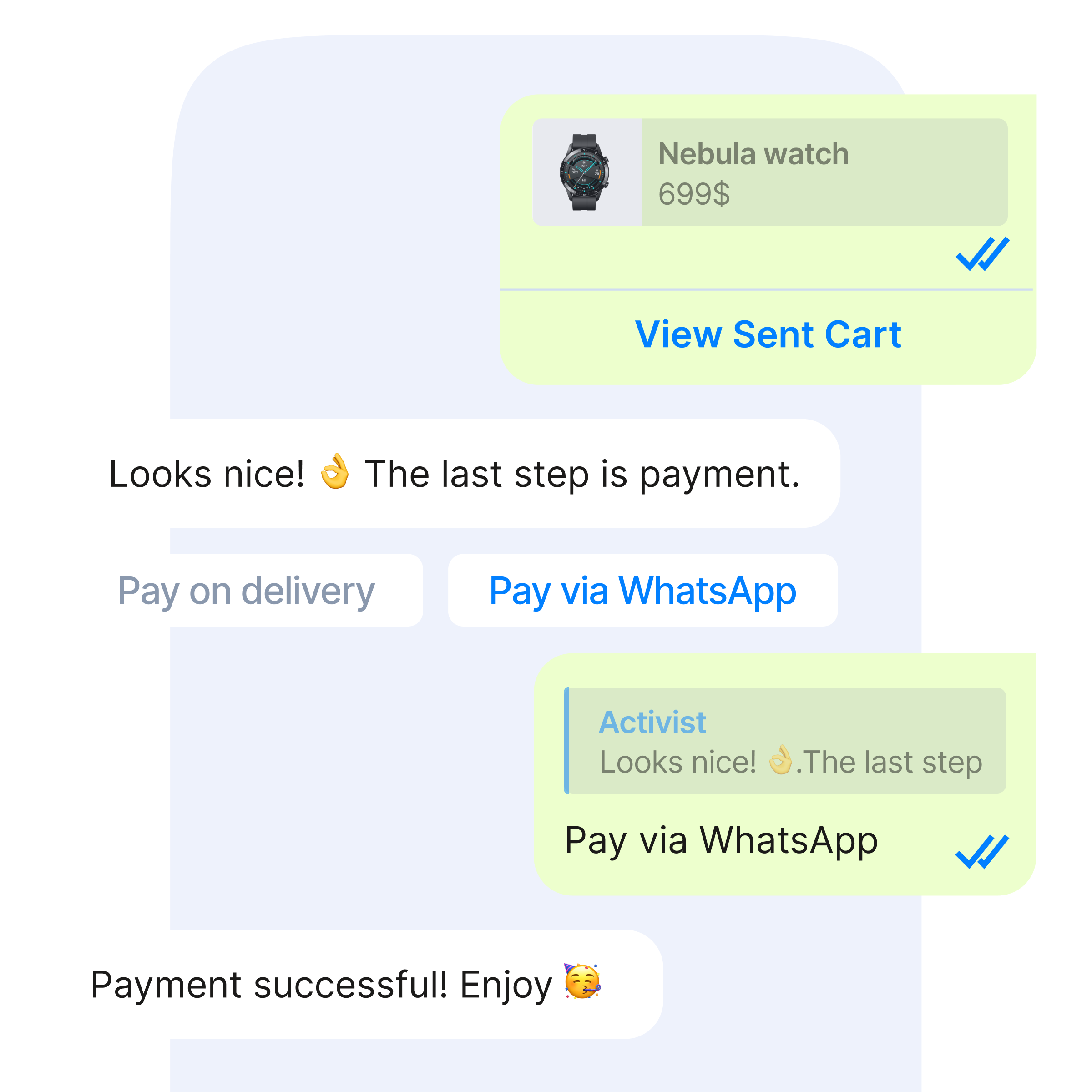
How to build a WhatsApp marketing strategy?
So, you’re starting to understand why WhatsApp is perfect for marketing, and how to get the most out of the channel, but how do you put it all together to build a successful strategy? Here’s a quick checklist of all the steps you will need to build a winning WhatsApp marketing strategy:
Define your WhatsApp marketing campaign goals
Before you start designing flows or sending messages, it’s essential to understand what success looks like for your WhatsApp marketing efforts. Clear goals help you decide which tools to use, how to structure your campaigns, and how to measure results. Think about what stage of the customer journey you want to impact:
- Awareness: Use WhatsApp to introduce your brand, promote new products, or share exclusive launches.
- Engagement: Send updates, polls, or personalized recommendations to spark two-way conversations.
- Conversion: Guide customers through purchase decisions with in-chat product catalogs, limited-time offers, and secure payments.
- Retention: Automate post-purchase messages, satisfaction surveys, or loyalty program reminders to keep customers coming back.
Your objectives, whether driving traffic, increasing sales, or improving customer satisfaction, will determine the setup you need, which we explained a few sections above.
Collect opt-ins for WhatsApp marketing
Opt-ins must be collected before you send a message to a customer using WhatsApp. If a customer completes a consent form, or if they initiate the conversation, you have collected their opt-in for receiving messages over WhatsApp. Your business is responsible for storing opt-ins (aka customer consent to receive messages from your brand). When collecting opt-ins, you must:
- Clearly state that a person is opting in to receive messages from your business over WhatsApp.
- Clearly state the business name that a person is opting in to receive messages from.
- Comply with all Meta regulations and local regulations.
You can then consider how you will maximize opt-ins:
- Consider advertising on Facebook and Instagram with ads that click to WhatsApp.
- Displaying an opt-in link on your website and social media pages.
- Build opt-in requests into your business workflows, for example, at checkout show customers the benefits of opting in to receive delivery notifications, product registration help, or special offers on related products.
- Use QR codes on outdoor media and product packaging that, when scanned, launch a WhatsApp chat with your brand.
Choose the right WhatsApp marketing software
The success of your WhatsApp marketing strategy largely depends on the tools you use. The right software helps you manage contacts, design message flows, automate campaigns, and measure performance, all while ensuring compliance with Meta’s policies. When choosing your WhatsApp marketing software, look for:
- Official WhatsApp Business API provider access: To guarantee high deliverability, compliance, and scalability.
- Automation and personalization features: Create message templates, schedule broadcasts, and trigger personalized messages based on customer behavior.
- Integration capabilities: Connect WhatsApp with your CRM, eCommerce platform, or marketing automation tools to sync data and streamline communication.
- Analytics and reporting: Track key metrics like delivery, open, and click-through rates to understand what’s working.
- Customer support and onboarding: Choose a partner that provides ongoing technical and strategic support.
Build customer personas & workflows
People use WhatsApp to connect with friends and family to have personal conversations. When using the app to interact with a brand, they expect the same type of experience. Make sure that your brand persona and tone of voice can be properly conveyed through the chat app.
It is a good opportunity to show your brand’s playful and human side, which makes for more engaging marketing interactions. WhatsApp is not the right channel for boring and robotic conversations.
Additionally, building out your workflows is key to delivering the right message, to the right person, at the right time. Using an omnichannel customer engagement solution can help you design and launch interactions with engaging message types over WhatsApp.
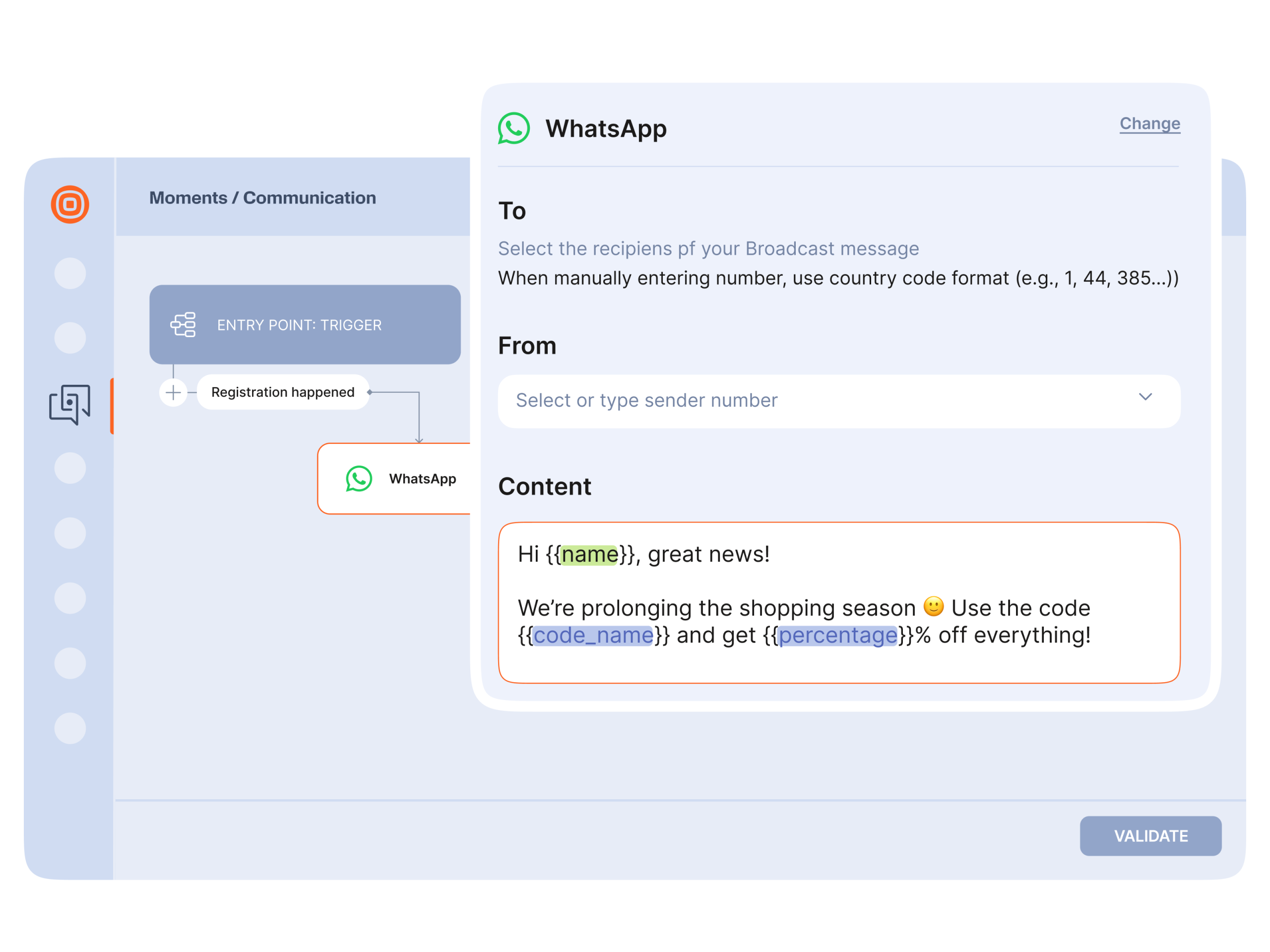
Track performance and optimize
Once your WhatsApp campaigns are live, continuous optimization is essential to improve results over time. Regularly tracking performance helps you identify what resonates with your audience and what needs adjustment. Key metrics to monitor include:
- Delivery and read rates: Check how many of your messages reach customers and how many are opened.
- Response rates: Measure engagement levels and how quickly customers reply.
- Click-through and conversion rates: Track how many users take the desired action after receiving a message.
- Opt-out rates: High opt-out numbers may indicate that your messaging frequency or tone needs fine-tuning.
Use these insights to refine your targeting, message timing, and tone. Experiment with different templates, interactive message types (like quick replies and CTA buttons), and automation flows to keep conversations fresh and effective.
Regular testing and optimization ensure your WhatsApp marketing strategy remains relevant, helping you continuously improve customer experience and ROI.
WhatsApp marketing campaign examples
CarDekho, a leading auto tech company in India was looking for a way to advertise deals to their customers with the best visibility and to improve conversion rates. They decided to use WhatsApp to send alerts to prospective buyers that fit their criteria. .
-
15K
conversations per day . -
2M
sessions during campaign period .
Unilever, one of the world’s largest consumer goods corporations, decided to launch a WhatsApp campaign where they could interact with the chatbot MadameBot who gave advice on how to take care of their clothing and receive a 50% off coupon. .
-
290K
messages exchanged in 7 days . -
14x
higher product sales .
WhatsApp marketing use cases by industry
Every industry communicates differently and WhatsApp adapts to them all. Here are high-impact plays you can launch today.
Retail and eCommerce
- Send WhatsApp promotional messages for new products: Based on customer interests you can send targeted messages for new products, with full descriptions for customers to browse within the chat.
- Back-in-stock messages: Instantly send back-in-stock messages for your customers’ favorite products along with CTA buttons for reserving or purchasing the products in WhatsApp.
- Abandoned cart messages: Remind customers to complete their purchases so they don’t lose the opportunity to buy what they left in their carts.
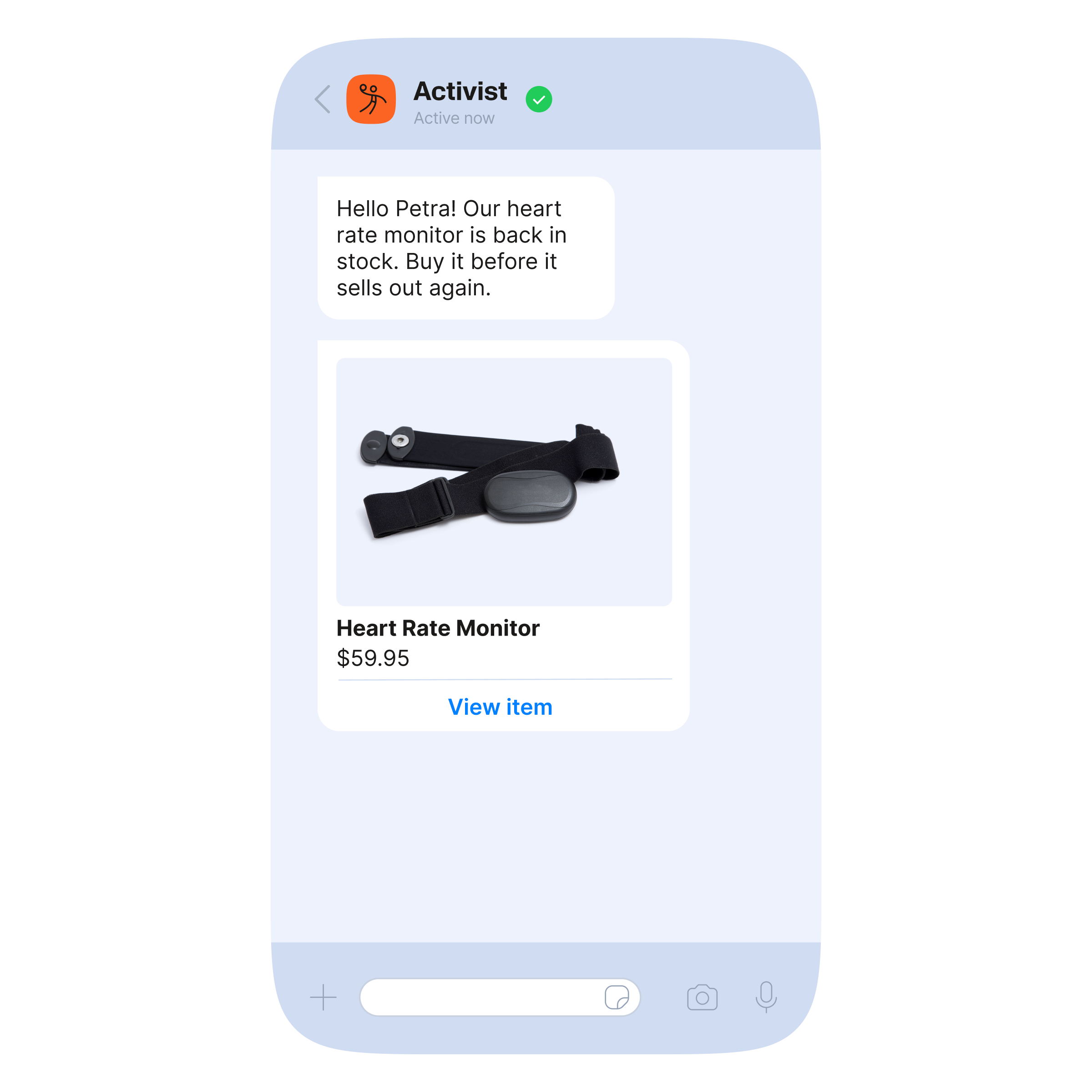
Banking and finance
- Lead generation chatbot: Use a self-service chatbot that can help customers navigate the discovery stage of their journey. The WhatsApp chatbot can answer questions about accounts, plans and send educational videos and materials to help with converting the lead.
- Account registration: Open cross-selling opportunities by enabling customers to register for new accounts via WhatsApp. Our customer DinarPAY did this very successfully.
- Time-sensitive promotions: Send customers campaigns with time-sensitive promotions for better interest rates or collecting loyalty points. On WhatsApp, your campaigns have the best visibility, so they are sure to be seen and acted on quickly when sent to the right audience.
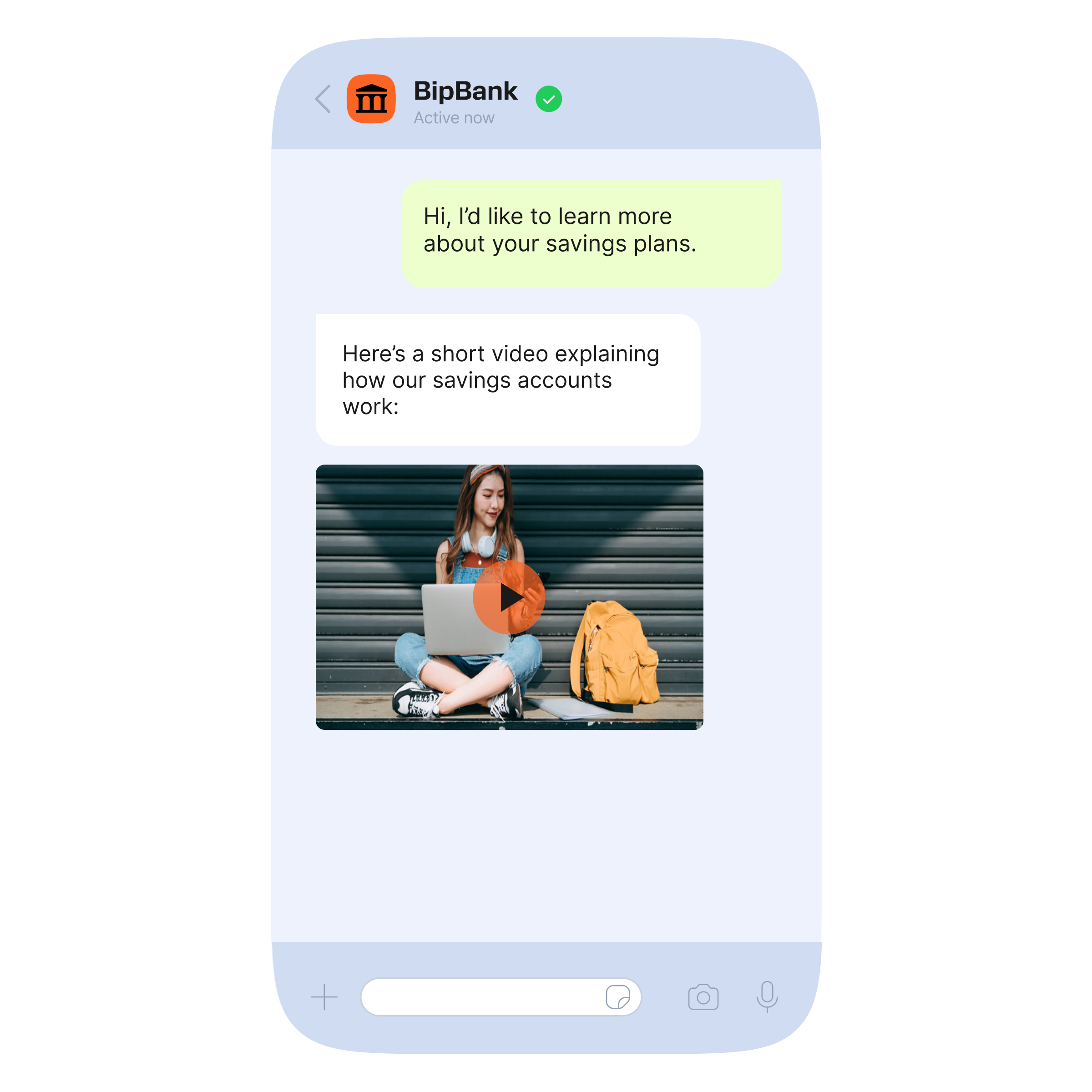
Telecommunications
- Loyalty promotions: Launch loyalty campaigns with special contracts or plans for loyal customers.
- Product recommendations: When a customer’s contract is almost up or they haven’t purchased a phone in some time, send them a list of phones that fit their needs within WhatsApp. The customer can browse product details and ask to be transferred to an agent for more information.
- Top up data: Send promotional messages that enable customers to easily top up their data or upgrade their contracts.
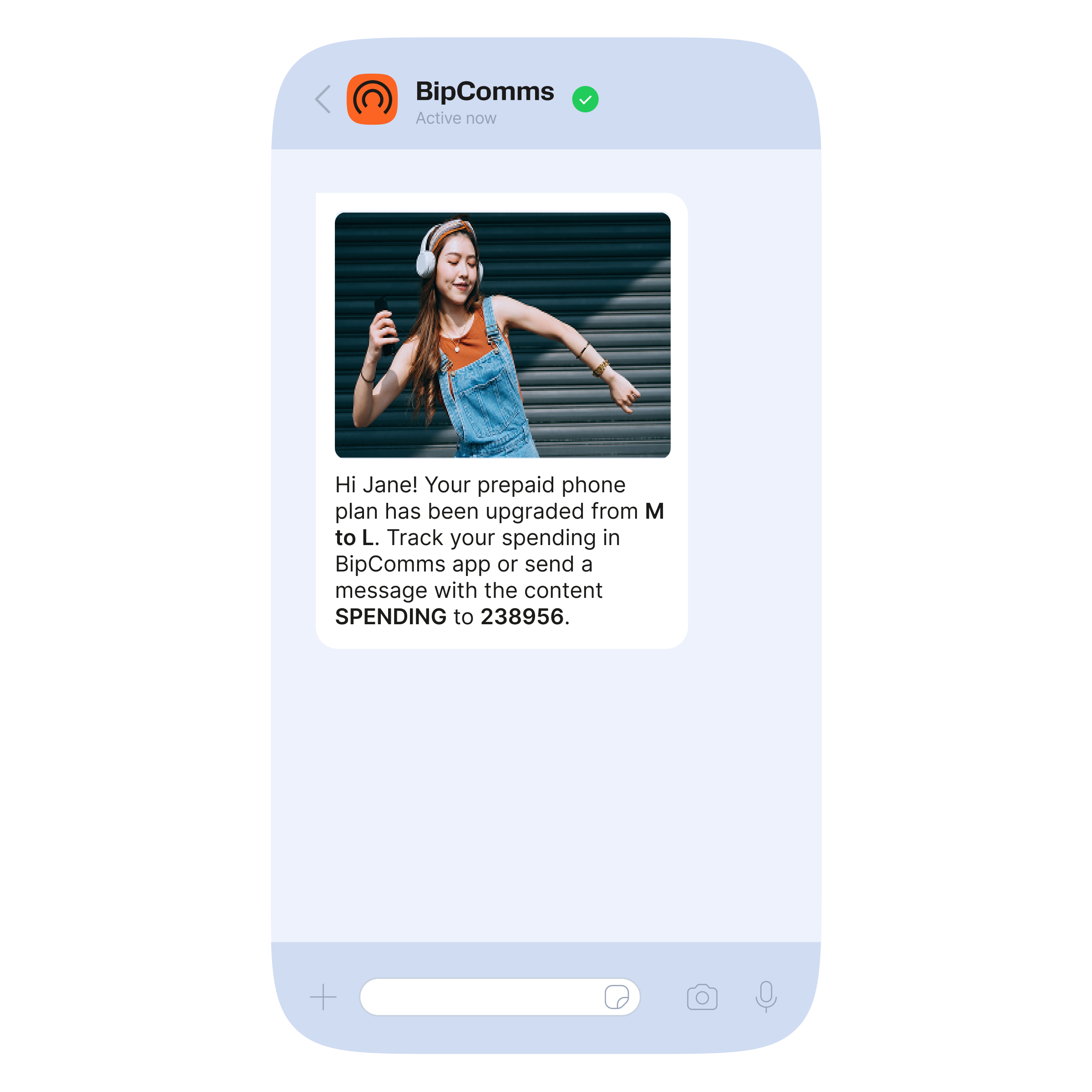
Travel and hospitality
- Acquire and convert bookings: Run click to WhatsApp ads to capture intent at the moment it peaks, then guide prospects through pricing, availability, and instant booking inside the chat.
- Pre-trip service and upsell: Send digital check-in, travel checklists, visa and document reminders, and add-on offers like seat upgrades, lounge access, extra baggage, and excursions. Build guided flows for booking changes and upsells, and allow in-chat payments to remove checkout friction before the trip even starts.
- In-stay concierge and service recovery: Automate common requests like room service, housekeeping, spa bookings, restaurant reservations, late checkout, and activity confirmations with a chatbot, then hand off to a live agent when needed.
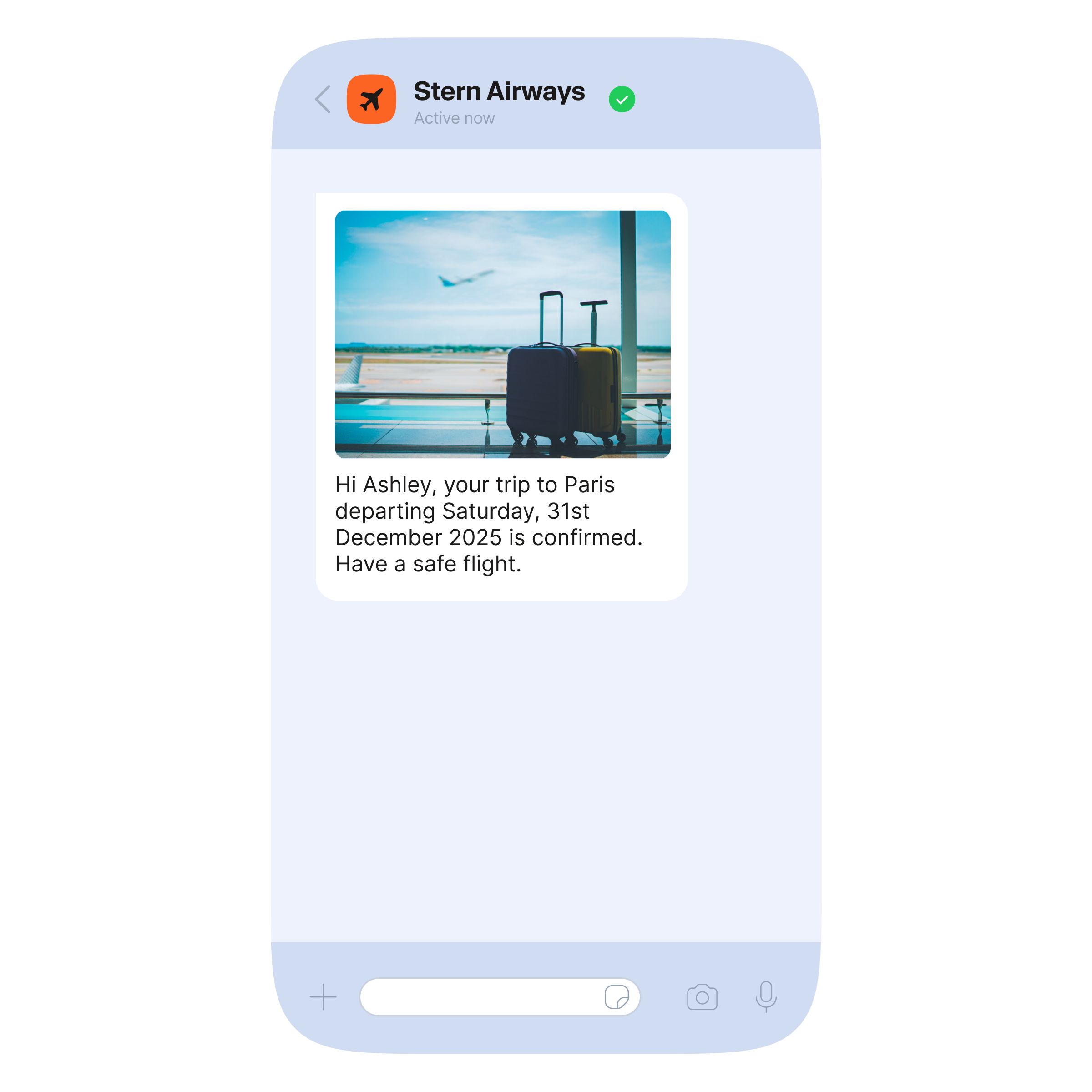
Best practices for WhatsApp marketing
Following these best practices ensures your messages stay compliant, relevant, and welcomed by your audience.
User-level cappings
Until recently, WhatsApp’s high regulations regarding messages that can be sent to customers didn’t limit the number of messages a customer could receive.
However, as of February 2024, Meta implemented a new set of advanced measurement mechanisms, limiting the number of marketing conversations a customer receives from any business in a specific time frame, and all other marketing messages beyond that limit will be blocked.
The new limit on the number of marketing messages businesses can send to customers in a specific time frame has been rolled out globally.
So, what do businesses need to do to ensure they respect these new limits and still run successful marketing campaigns on WhatsApp?
- Develop a strategic and customer-centric approach to messaging
- Value quality of messages over quantity
- Personalize messages to fit the need of each customer
- Partner with a conversational experience platform for the best tools and solutions for WhatsApp messaging
Personalization over mass messaging
WhatsApp is designed for conversations, not broadcasts. Sending generic, one-size-fits-all messages can quickly erode customer trust. Instead, use personalization to make every interaction meaningful. Whether that means tailoring recommendations based on purchase history, adjusting timing by location, or addressing customers by name.
With Infobip’s integrations, you can sync audience data from your CRM or eCommerce platform to segment users effectively and trigger messages based on real behavior. This approach not only improves engagement rates but also helps keep your communication consistent across channels.
Maintaining conversational tone
Unlike traditional marketing channels, WhatsApp thrives on dialogue. Messages should sound natural, approachable, and human, mirroring the way your customers already use the app.
Instead of just pushing promotions, focus on creating a two-way experience: answer questions, share updates, and offer support within the same thread. Use quick replies, rich media, and interactive buttons to make it easy for customers to respond.
A conversational approach not only increases engagement but also helps build long-term relationships grounded in trust and value.
Why choose Infobip for WhatsApp marketing solutions
Leading brands trust Infobip’s WhatsApp Business Platform to achieve measurable impact. Unilever saw 14x sales growth, Anghami reached 265% higher engagement with WhatsApp than with email, and Nissan generated 138% more qualified leads.
These results show what’s possible when WhatsApp becomes more than a messaging app, it becomes a core channel for personalized, timely, and meaningful customer engagement.
As an official Meta Business Solution Provider, Infobip gives you access to the full capabilities of the WhatsApp Business Platform. From interactive Flows and chatbots to in-chat payments and product catalogs, you can create seamless journeys that take customers from discovery to purchase, all within one trusted channel. Every interaction is protected with end-to-end encryption and verified business profiles to ensure privacy and brand authenticity.
Another advantage of Infobip lies in our connectivity and integration. Our platform plugs directly into your CRM, eCommerce, and marketing tools, enabling you to trigger campaigns, sync audiences, and connect live agents, without complex setup. You can also run WhatsApp alongside other channels like SMS, RCS, Telegram, and Viber for Business to build consistent, cross-channel experiences with automatic failover for reliability.
Performance and measurement are built in. You can track delivery, engagement, and conversion metrics in real time and send conversion signals to Meta to better understand your ads-to-chat ROI.
Finally, you can scale with confidence. Infobip powers communications for more than 2,000 enterprise brands worldwide, backed by multilingual 24/7 support, enterprise-grade reliability, and a globally distributed infrastructure. Whether you’re launching your first WhatsApp campaign or managing millions of conversations, Infobip provides the platform, expertise, and scale to help you grow. What are you waiting for?
FAQs about WhatsApp marketing
WhatsApp marketing uses the WhatsApp Business Platform to run permission-based campaigns and conversational journeys. Brands engage customers with rich messages, interactive buttons, catalogs, chatbots, flows, and payments. You can reply freely within a 24-hour window when a customer starts the chat, and you can also send business-initiated messages using approved templates after opt-in.
Costs include Meta’s per-temaplate rates, which vary by country and template category: marketing, utility, and authentication. You may also have ad spend and platform fees. Once the user starts interacting with you via click to WhatsApp ads, a special entry point rules apply: all templated messages sent within 72-hour time window are free of charge. For exact rates and bundle options, see Infobip’s WhatsApp pricing or talk to our team.
The best software should handle campaigns, automation, analytics, compliance, and integrations in one place. Infobip is a Meta Business Solution Provider offering flows, chatbots, templates, payments, omnichannel orchestration, and real-time reporting, used by 2,500+ enterprise brands globally with 24/7 support.
Yes. WhatsApp marketing is allowed when you collect explicit opt-ins and use approved templates for business-initiated messages. Verified business profiles and end-to-end encryption support authenticity and privacy.
Yes. Small teams can start with the WhatsApp Business App for basic one-to-one messaging and simple catalogs, then move to the WhatsApp Business Platform via Infobip for automation, templates, analytics, and scale across markets and channels.










